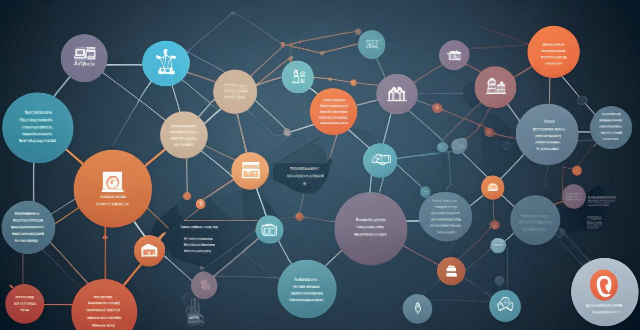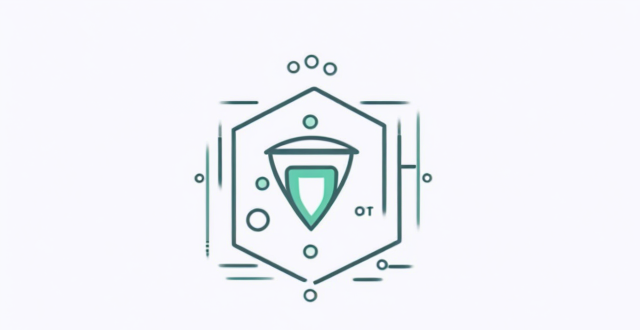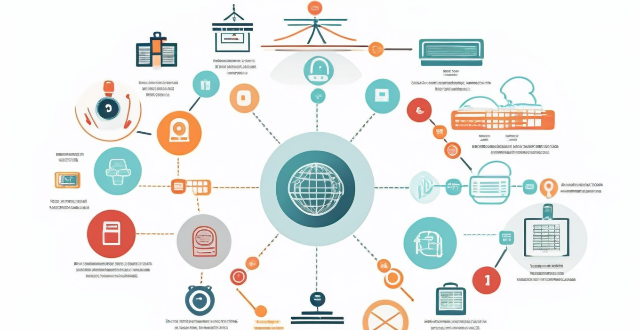Security Protocols

How do communication protocols ensure data integrity and security during transmission ?
The text discusses the role of communication protocols in ensuring data integrity and security during transmission. It outlines mechanisms such as checksums, sequence numbers, acknowledgments for maintaining data integrity, and encryption, authentication, and secure protocols for ensuring data security. The article emphasizes that adhering to these rules allows devices to communicate reliably and securely over networks.

What role do communication protocols play in IoT (Internet of Things) devices ?
Communication protocols in IoT devices are crucial for data transmission, interoperability, scalability, security, and error handling. Common protocols include MQTT, CoAP, Zigbee, Bluetooth Low Energy, and LoRaWAN, each with specific features like lightweight design, mesh networking, energy efficiency, long-range communication, and broadcast capabilities. These protocols enable seamless interaction between devices and will continue to drive innovation in the IoT field.

What is the significance of communication protocols in cloud computing ?
In the realm of cloud computing, communication protocolsIn the realm of cloud computing, communication protocols role in facilitating communication protocols play a pivotal role in facilitating seamless and efficient data exchange between various components of a cloud infrastructure. These protocols ensure that data is transmitted reliably and securely across different platforms, devices, and applications within the cloud ecosystem. This article delves into the significance of communication protocols in cloud computing by highlighting their key functions and benefits.

How have communication protocols evolved over time ?
The evolution of communication protocols has significantly impacted modern communication systems, transitioning from simple analog signals to complex digital networks. Early communication systems were limited in speed and reliability, but laid the foundation for future advancements. The digital revolution introduced packet switching, leading to protocols like X.25 and Frame Relay. The Internet Protocol Suite (TCP/IP) standardized communication over the internet, enabling global connectivity and applications like email and web browsing. Wireless protocols like Wi-Fi and Bluetooth allowed mobile devices to communicate without physical connections. Future developments may include 5G networks, quantum communication, and IoT protocols. Overall, the evolution of communication protocols has greatly enhanced our ability to connect and access information.

What are some examples of wireless communication protocols ?
This article provides an introduction to wireless communication protocols, which are sets of rules and standards that enable devices to communicate with each other without the use of physical cables. It discusses several examples of wireless communication protocols, including Bluetooth, Wi-Fi, Zigbee, and LoRaWAN. Each protocol has its own unique features and benefits, making them suitable for different applications. For example, Bluetooth is commonly used for connecting devices such as smartphones, headphones, keyboards, and mice, while Wi-Fi is used for connecting devices to the internet or other networks. Zigbee is commonly used in home automation systems, and LoRaWAN is commonly used in IoT applications. By understanding these protocols, developers can create innovative solutions that improve our daily lives.

What are the security concerns related to IoT ?
The article discusses the major security concerns related to the Internet of Things (IoT), such as data privacy and confidentiality, device security, network security, physical security, and software vulnerabilities. It emphasizes the need for implementing appropriate security measures to ensure the secure deployment of IoT devices and protect sensitive information from unauthorized access.

What are the security concerns related to Smart Grid Technology ?
Smart grid technology, which uses digital communication technologies to monitor and control the flow of electricity, offers benefits such as increased efficiency and reliability. However, there are security concerns that need to be addressed, including cyber attacks, data breaches, insider threats, physical security risks, and interdependencies with other critical infrastructures. It is essential to implement strong cybersecurity measures, strict access controls, and robust physical security protocols to protect the system's integrity and confidentiality.

Does Wi-Fi 6 support the latest encryption standards for security ?
Wi-Fi 6, the latest wireless networking technology, not only significantly improves performance but also emphasizes security. It introduces several new features and technologies like OFDMA, MU-MIMO, BSS Coloring, and TWT to enhance data protection and user privacy. Wi-Fi 6 supports advanced encryption protocols such as WPA2 and WPA3, with WPA3 offering improved personal and enterprise network security. New technologies like BSS Coloring and TWT further enhance network security by reducing collisions and minimizing unauthorized access risks. The enhanced version of Wi-Fi 6, known as Wi-Fi 6E, utilizes additional frequency ranges to improve data throughput and create new opportunities for advanced security measures. As Wi-Fi 6 networks become more prevalent, security protocols are continually updated to address emerging threats, ensuring that the networks remain secure well into the future.

How can I integrate smart home devices with my home security system ?
The article provides a step-by-step guide for integrating smart home devices with a home security system, including determining compatibility, selecting the right devices, installing and configuring them, connecting to the security system, and testing the integration. The goal is to enhance safety and convenience by allowing remote control and monitoring of access, video surveillance, sensors, and lighting.

What are the latest trends in network security protection ?
Network security is a crucial aspect of modern computing, and it's constantly evolving to keep up with new threats. Here are some of the latest trends in network security protection: - AI and ML are becoming increasingly popular for detecting and responding to cyber threats. - IoT devices have poor security features or lack them altogether, making them easy targets for hackers. - With more businesses moving to the cloud, ensuring data is secure is essential. - Threat intelligence involves collecting information about potential threats and using it to improve defenses. - The zero trust model assumes that no one should be trusted by default, including those within an organization's network.

How do firewalls contribute to communication security ?
Firewalls play a crucial role in ensuring communication security by acting as a barrier between trusted and untrusted networks. They contribute to communication security through packet filtering, stateful inspection, application-level gateways, content filtering, network address translation (NAT), VPN support, and integration with Intrusion Prevention Systems (IPS). These features help in preventing unauthorized access, protecting against malicious traffic, scanning for viruses, filtering specific types of data, hiding internal network structures, ensuring secure remote access, and detecting potential attacks or policy violations in real-time. Overall, firewalls provide multiple layers of protection, effectively managing and controlling network traffic to secure communications and protect against various types of cyber threats.

What are the best practices for network security protection ?
The text provides a detailed outline on the best practices for network security protection, which can be summarized in the following points: 1. **Use Strong Passwords**: Create complex passwords using a mix of characters and numbers, change them regularly, avoid personal information, and use a password manager. 2. **Keep Software Up-to-date**: Regularly update all software to patch vulnerabilities and enable automatic updates where possible. 3. **Implement Firewall Protection**: Use both hardware and software firewalls, configure rules to allow necessary traffic only, and monitor firewall logs. 4. **Use Encryption**: Encrypt sensitive data in transit and at rest, use VPNs for remote connections, and implement end-to-end encryption for high-security communications. 5. **Educate Employees on Security Best Practices**: Conduct regular training, encourage safe online behavior, and establish clear policies for device and internet use. 6. **Limit Access Rights**: Grant access based on need, review and revoke unnecessary rights, and use multi-factor authentication for sensitive resources. 7. **Backup Data Regularly**: Create regular backups, test them periodically, and implement version control for important files. 8. **Monitor Network Activity**: Use IDS and IPS systems, set up alerts for unusual activity, and conduct regular security audits. By adhering to these practices, organizations can significantly enhance their network security posture and mitigate the risks associated with cyber threats.

Can you explain the working of HTTP and HTTPS protocols ?
HTTP and HTTPS are two important protocols for data transmission on the internet. The main difference between them is that HTTPS encrypts the transmitted data to protect it from interception and tampering, while HTTP does not. HTTP operates by default on TCP port 80 and transmits data in plaintext, while HTTPS uses SSL/TLS for data encryption and operates by default on TCP port 443. The working steps of HTTP include address parsing, DNS resolution, HTTP request packaging, establishing a TCP connection, sending a request command, server response, and closing the connection. On the other hand, the working steps of HTTPS involve an initial handshake, verifying a digital certificate, session key exchange, encrypted data transmission, and connection closure. With increasing concerns about cybersecurity, HTTPS has gradually become the preferred choice for websites requiring secure data transmission.

What are the best tools and technologies for network security protection ?
This article discusses some of the best tools and technologies for network security protection. The list includes firewalls, intrusion detection systems (IDS) and intrusion prevention systems (IPS), virtual private networks (VPNs), antivirus and anti-malware software, next-generation firewalls (NGFWs), network access control (NAC), and security information and event management (SIEM). These tools and technologies can help organizations protect their networks from unauthorized access, data breaches, and other cyber threats. However, it's essential to remember that no single tool or technology can provide complete protection on its own. A layered approach combining multiple solutions is often the most effective way to safeguard your network against today's complex threats.

How does two-factor authentication enhance security ?
Two-factor authentication (2FA) is a security process that requires two different factors to verify the user's identity, enhancing security by reducing the risk of unauthorized access, providing alerts for suspicious activities, protecting against various types of attacks, increasing user confidence in online services, and helping maintain compliance with security standards. Its implementation should be carefully planned considering both security requirements and user convenience.

How do firewalls contribute to network security ?
Firewalls are crucial for network security, offeringFirewalls are crucial for network security, offering, blocking unwanted connections, preventing preventing network intrusion, enforcing security policies, providing VPN support, integrating with other security systems, protecting against known threats, offering customizable features, ensuring scalability and performance, and reducing the risk of data breach.

Can blockchain technology improve data security and privacy ?
Blockchain technology has been touted as a revolutionary tool that can improve data security and privacy. Its decentralized nature, encryption, and transparency make it difficult for attackers to compromise the network. Additionally, its anonymity, control over personal data, and smart contracts enhance privacy by giving individuals more control over their information.

How do communication protocols manage errors and congestion in a network ?
Communication protocols play a crucial role in managing errors and congestion in a network. They use various techniques such as checksums, acknowledgments, timers, traffic shaping, congestion control, and error recovery mechanisms to ensure reliable and efficient data transmission between devices on a network.

What are the differences between free and paid VPN services ?
The text discusses the key differences between free and paid VPN services, highlighting aspects such as speed and bandwidth, security and encryption, server locations and IP addresses, customer support, and device compatibility and simultaneous connections. It concludes that while free VPN services are cost-effective, they often compromise on speed, security, and reliability. In contrast, paid VPN services offer a more comprehensive and reliable solution for users prioritizing privacy, security, and performance.

How do remote education platforms ensure data privacy and security ?
Remote education platforms ensure data privacy and security through encryption, access controls, two-factor authentication, regular security audits, and data retention policies. These measures help protect user data during transmission and storage, restrict access to sensitive information, add an extra layer of security, identify and fix vulnerabilities, and minimize the risk of data breaches.

How does climate change affect food security and nutrition ?
Climate change significantly impacts global food security and nutrition by causing extreme weather events, altering ecosystems, reducing water availability, affecting marine life, posing agricultural challenges, and diminishing nutrient intake. Mitigation strategies include sustainable agriculture practices, dietary diversification, and research and development to ensure future food security and nutrition.

What are some tips for getting through security quickly and efficiently ?
Getting through security quickly and efficiently requires preparation and knowledge. Pack smart by following the 3-1-1 rule for liquids, keeping electronics separate, storing medications in their original containers, and wearing easy-to-remove shoes and jackets. Know the rules by researching specific security policies, having travel documents ready, and avoiding restricted items. At the security checkpoint, prepare your belongings by placing metal objects in your carry-on bag and separating liquids. Follow procedures by staying alert, complying with instructions, and moving swiftly. After security, reorganize and regroup by repacking liquids and reassembling any removed accessories or outer layers. Stay informed about any updates to security procedures before your next trip.

How do I choose the right VPN service for my needs ?
Choosing the right VPN service is crucial for ensuring your online privacy, security, and accessing geo-restricted content. Here's a guide to help you make an informed decision: 1. Identify Your Needs: Determine what you need the VPN service for, such as privacy and security, accessing geo-restricted content, bypassing censorship, or improving gaming experience. 2. Check the VPN's Location and Jurisdiction: The legal jurisdiction of the VPN provider plays a significant role in your privacy. Look for providers located in countries without strict data retention laws. 3. Encryption and Protocols: The level of encryption and the protocols offered are critical for security. OpenVPN and IKEv2 are considered the most secure and efficient. Avoid VPNs that rely on PPTP or L2TP/IPSec without a separate encryption layer. 4. Server Network and Speed: A vast network of servers worldwide ensures better speed and connectivity. Look for a VPN with numerous servers across different continents. Speed is also crucial, especially if you plan to stream HD videos or download large files. 5. Privacy Policy and Logging: A strict no-logs policy is vital for maintaining your privacy. Always check the privacy policy to ensure they don't collect or share your data. 6. Device Compatibility and User Interface: Choose a VPN that supports all your devices, including smartphones, tablets, and PCs. A user-friendly interface makes it easier to connect and manage your VPN settings. 7. Customer Support: Look for VPNs that offer 24/7 live chat support or at least a responsive ticket system. Good customer service can help resolve technical issues quickly. 8. Price and Value for Money: While free VPNs might seem appealing, they often come with limitations, such as data caps and slower speeds. Paid VPNs offer more features and better performance. Consider the cost against the services provided to determine the best value. 9. Reputation and Reviews: Research the VPN's reputation through reviews and forums. Feedback from other users can provide insights into the reliability and effectiveness of the service. 10. Legal and Ethical Considerations: Ensure that the VPN service you choose complies with local laws and ethical standards. As per the statements from the Ministry of Industry and Information Technology, using a VPN for legitimate business purposes is protected under law. Always use VPNs responsibly and for legitimate purposes. In conclusion, choosing the right VPN service requires careful consideration of your needs, the provider's security measures, server network, privacy policy, device compatibility, customer support, and cost. By following these guidelines, you can find a VPN service that meets your requirements while ensuring your online privacy and security.

What are the most commonly used communication protocols in networking ?
The text discusses the following topics: 1. Introduction 2. Transmission Control Protocol/Internet Protocol (TCP/IP) 3. Hypertext Transfer Protocol (HTTP) 4. File Transfer Protocol (FTP) 5. Simple Mail Transfer Protocol (SMTP) 6. Conclusion

What are the main threats to communication security ?
The text discusses the main threats to communication security, which include eavesdropping and unauthorized access, malware and viruses, social engineering and phishing, insider threats, and DoS attacks. It also provides mitigation strategies for each threat, such as encryption, secure networks, physical security, antivirus software, firewalls, software updates, awareness training, email filters, multi-factor authentication, access controls, monitoring and auditing, termination procedures, rate limiting, content delivery networks (CDNs), and intrusion detection systems (IDS).

What are the potential impacts of climate conflicts on global security ?
Climate conflicts have the potential to significantly impact global security by causing economic disruption, political instability, and even armed conflict. Governments and international organizations must recognize this issue and take action to mitigate the effects of climate change.

What are some examples of how climate change has affected international security ?
Climate change has significant implications for international security, including resource scarcity and competition, displacement and migration, state fragility and failed states, environmental refugees, and national security threats. These challenges require global cooperation and strategic planning to mitigate their effects on international stability.

Does restrictive immigration policy improve national security ?
The text discusses the complex question of whether restrictive immigration policy enhances national security. It explores various aspects including economic impact, social cohesion, international relations, and internal security dynamics to provide a nuanced understanding. The text concludes that while a restrictive immigration policy might seem appealing from a national security standpoint, it is not a silver bullet, as benefits must be weighed against potential negative impacts on different factors. A balanced approach that ensures thorough vetting without undue restrictions might prove more effective in enhancing national security in the long term.

How does a communication protocol differ from a data format ?
### Topic Summary: Communication Protocol vs. Data Format This topic discusses the differences between communication protocols and data formats, two critical aspects of data exchange in computer systems. A communication protocol is a set of rules that govern how devices or systems communicate with each other, including syntax, semantics, and timing. On the other hand, a data format defines the structure or layout of data for storage or transmission, focusing on the organization of bits, bytes, or fields and their encoding. The main differences between these two concepts are their purpose, scope, and complexity. Communication protocols deal with the entire process of data exchange, including error handling, flow control, and congestion control, while data formats focus solely on the structure of the data. Examples provided include HTTP as a communication protocol and JSON as a data format, which can be used within various communication protocols to send structured data. In summary, communication protocols are like the rules of a conversation, defining how devices interact, while data formats are like the language used in those conversations, specifying how the information is structured and encoded.